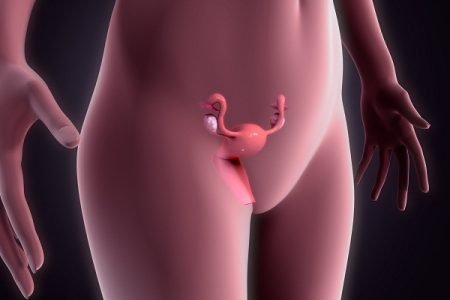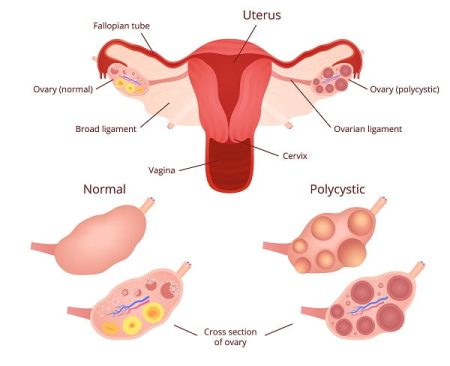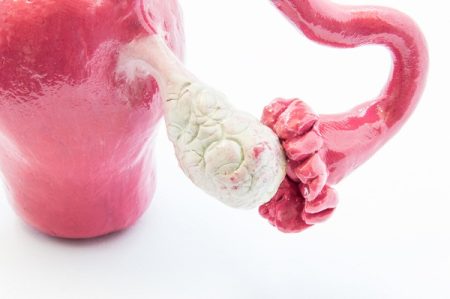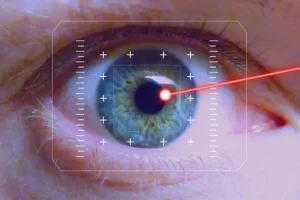What are the Treatment Options for Endometriosis?
- Updated on: Jul 29, 2024
- 3 min Read
- Published on Sep 27, 2019
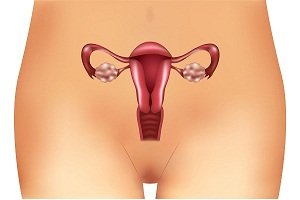
Treatment of endometriosis
Currently, there is no cure for endometriosis. However, there are options to cure infertility and pain caused due to endometriosis. Healthcare professionals say that there are many factors which determine the treatment option opted for endometriosis like:
- age of patient
- severity of symptom
- whether the patient wants children
Depending on the severity and stage of endometriosis, different treatment options are used. Not all treatment works on all the women.
There are chances of recurring of symptoms and the disease after treatment. Treatment is done with the help of medications and surgeries.
Following are the treatment options most commonly suggested by doctors:
- Over-the-counter medications
- Hormone therapy
- Surgery
- Hysterectomy
- Laparotomy
Over-the-counter medicines
The doctor may recommend over-the-counter painkillers like non-steroidal anti-inflammatory drugs (NSAIDs), ibuprofen or naproxen to relieve the pain and cramps.
If the medications don’t work on the patient, the doctor may start with other treatment options to help with the symptoms. The medicines are:
- Non-steroidal anti-inflammatory drugs (NSAIDs) are preferred for the mild to moderate pain caused due to endometriosis. Ibuprofen and naproxen are commonly used. Another reason for the popularity of these drugs is their ability to act on multiple problems such as swelling and discomfort.
- Paracetamol is also used to treat mild pain. However, paracetamol being analgesic is not as effective as NSAIDs. Also, there are certain side effects like vomiting and diarrhea.
- Codeine is a strong painkiller and usually combined with paracetamol. Constipation is a common side effect associated with this medicine.
Hormone therapy
Hormones taken externally (supplement hormones) are effectual in reducing endometriosis symptoms and pain. The increase and decrease in the levels of hormones during menstrual cycle cause cramping and pain.
Endometrial implants congeal (thicken), break down and bleed. Hormone supplements for estrogen and progesterone slow down the growth of endometrial implants. It also prevents formation and growth of new implants.
Despite hormonal therapy being an effective option for the treatment, the symptoms may return after discontinuation of the therapy.
Following are the hormonal therapies used:
Contraceptives
Hormonal contraceptives like vaginal rings and birth control pills help in controlling the hormones responsible for the thickening of endometrial implants with each menses. Women on birth control pills have light and short duration menstrual flow. Using hormonal contraceptives thus reduce the pain and other signs of endometriosis.
Gn-RH antagonists
Gonadotropin-releasing hormone or Gn-RH stimulates the release of estrogen which in turn thickens the endometrial wall in uterus. Gn-RH antagonist blocks the production of ovarian-stimulating hormone.
The reduction in the level of ovarian-stimulating hormone lowers the level of estrogen resulting in shrinkage of endometrial implants. These drugs often create a menopause-like situation and thus a low level of estrogen pills are advised with it.
Examples of Gn-RH antagonists are:
- buserelin
- goserelin
- nafarelin
- leuprorelin
Some women report side effects of these drugs like hot flashes, dry vagina and bone-loss. Gn-RH antagonist is not licensed drug.
Progestin therapy
Intrauterine devices (IUDs), contraceptive implants and contraceptive injections (or pills) are called as progestin-only contraceptives. These progestin-only drugs can stop menses and simultaneously endometrial implants. This relieves signs and symptoms of endometriosis.
These drugs work like natural hormones and prevent the lining of uterus and endometrium growth. However, there are certain side effects associated with them like:
- irregular bleeding
- mood change
- weight gain
- bloating
These are usually taken in daily tablets for 5th to 26th day of menstrual cycle. The first day of periods is counted as day one.
Danazol
Danazol is a drug prescribed to suppress the growth and thickening of endometrial implants. The drug works by blocking the production of ovarian-stimulating hormone that induces ovaries to produce estrogen. As a result, estrogen level decreases and endometrial growth slows down.
Doctors generally avoid prescribing this drug, as it can prove harmful to fetus.
Surgery
Conservative surgery is used in cases where woman is trying to get pregnant. Surgery is done to remove as much endometrial implants as possible.
The procedure is carried out in such a way that no damage is done to the uterus and ovaries. Surgery is also beneficial for women suffering from severe pain of endometriosis. The doctor may perform the surgery by two ways- laparoscopically or by abdominal surgery.
In laparoscopy, the doctor inserts two thin instruments through two different incisions near navel. The incisions are small – one is for laparoscope and the other for endometrial implant-cleaning instrument. In worst cases, the symptoms may return after surgery.
Hysterectomy
In severe cases of endometriosis, the doctors have to remove the uterus and cervix along with the ovaries. This is the best treatment for women who do not want babies in future. However, complete removal is not sufficient.
Hysterectomy is the last option for the women in reproductive age.
Laparotomy
Laparotomy is a major surgical procedure for severe cases of endometriosis. It is used in cases where organs struck to each other.
The surgeon makes a long cut along the bikini line and opens area to access the affected organs. The endometrial tissue is then removed by specialized doctors.





